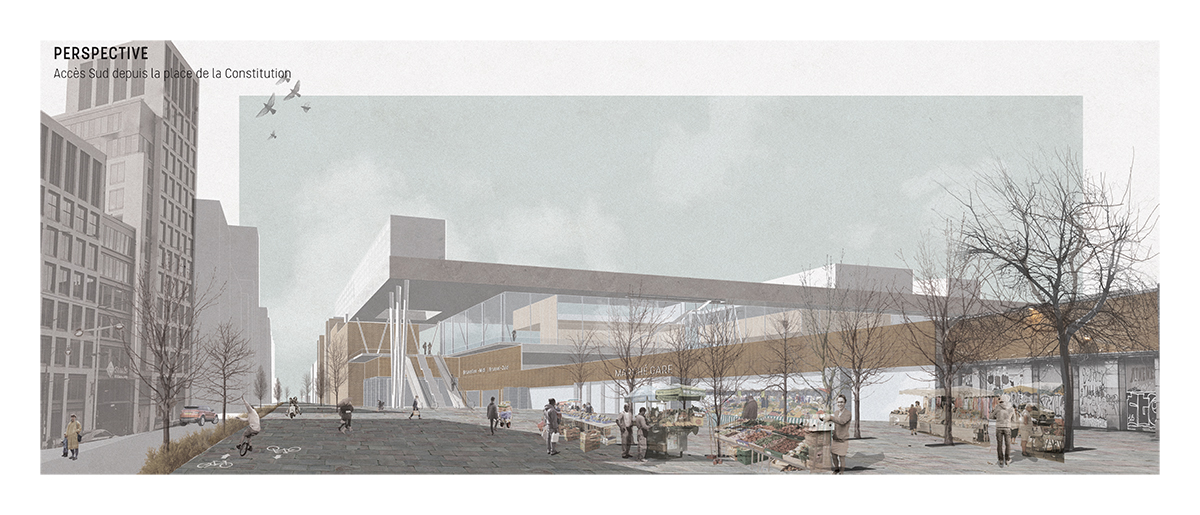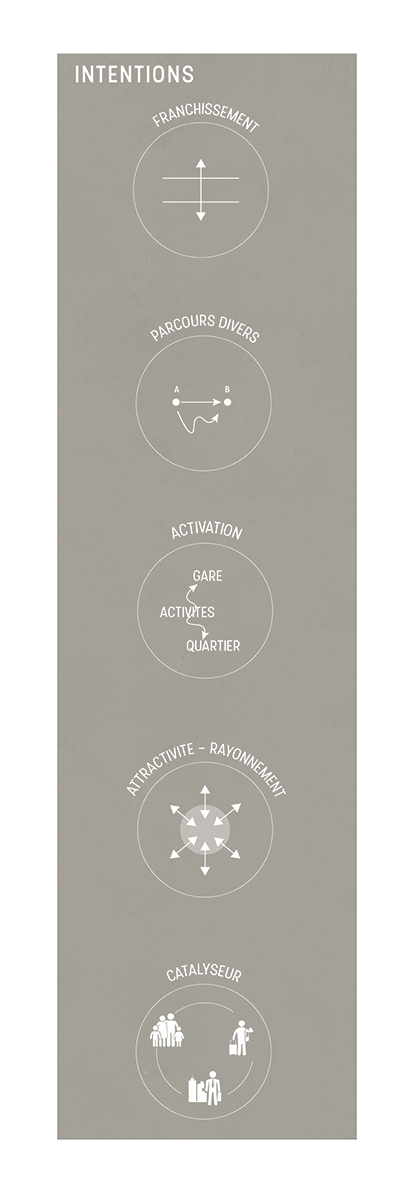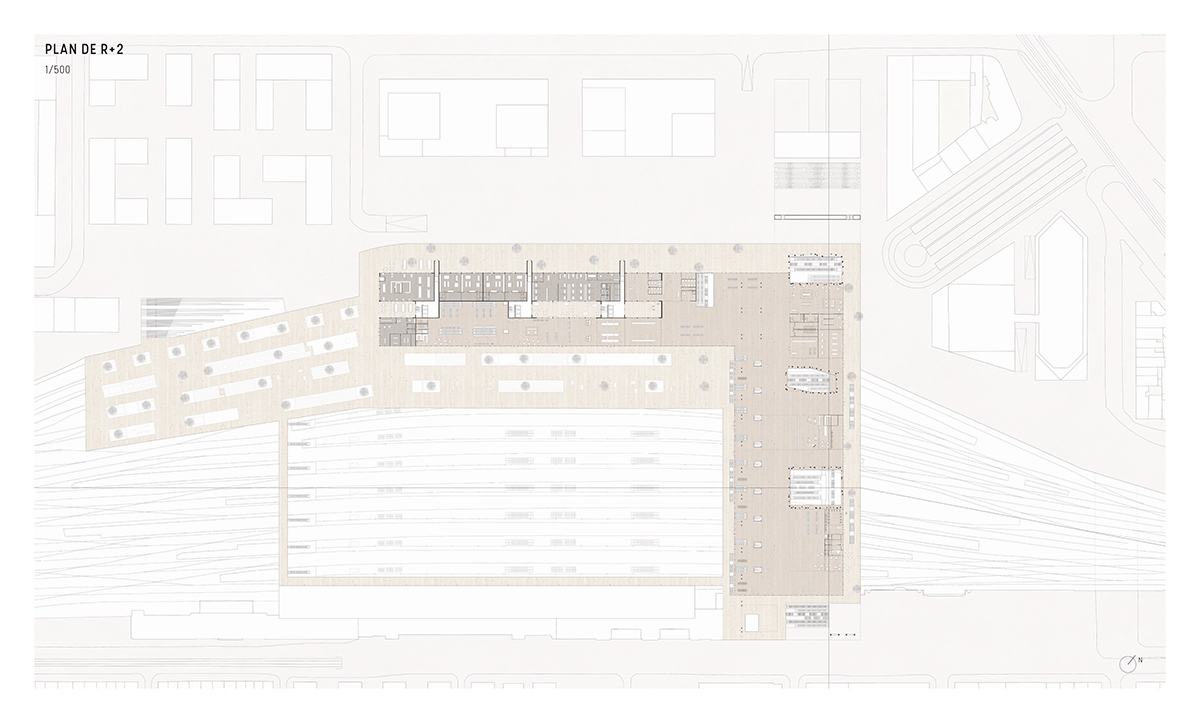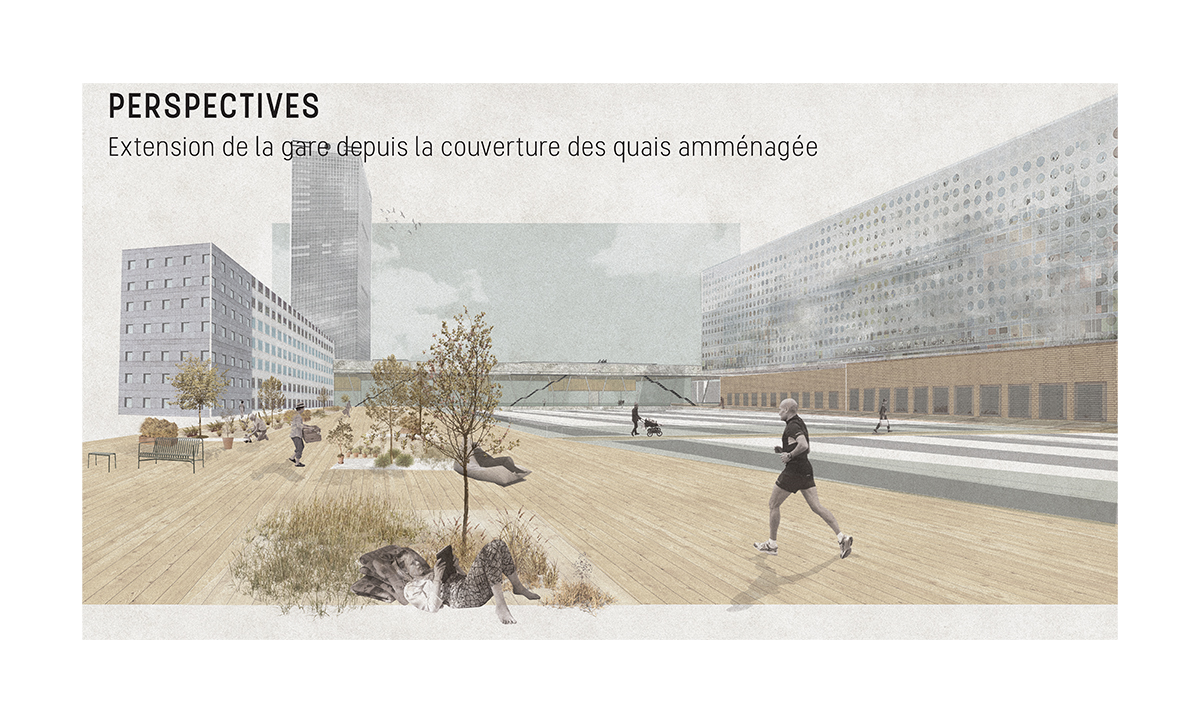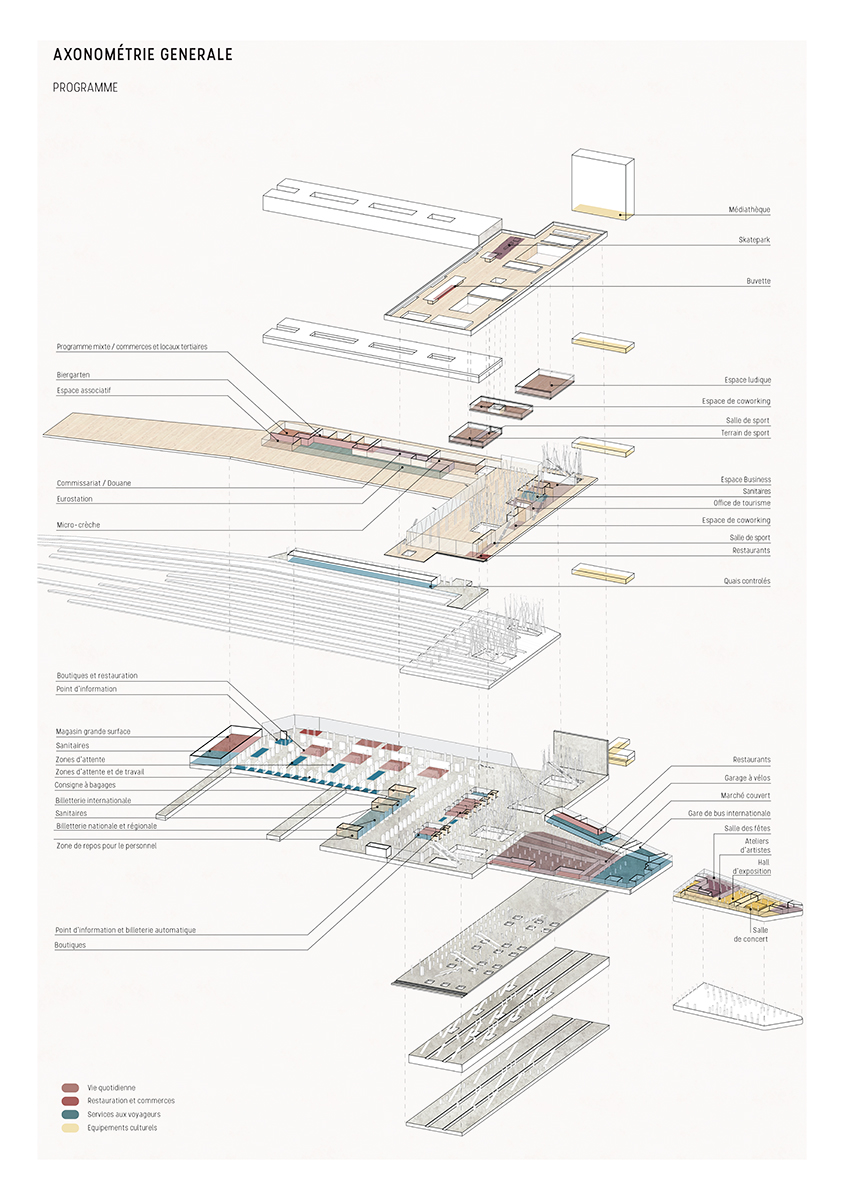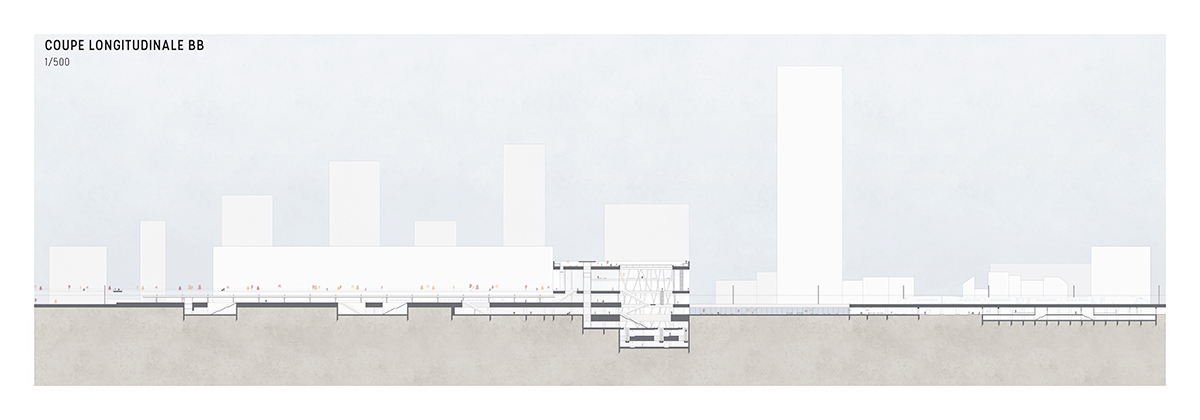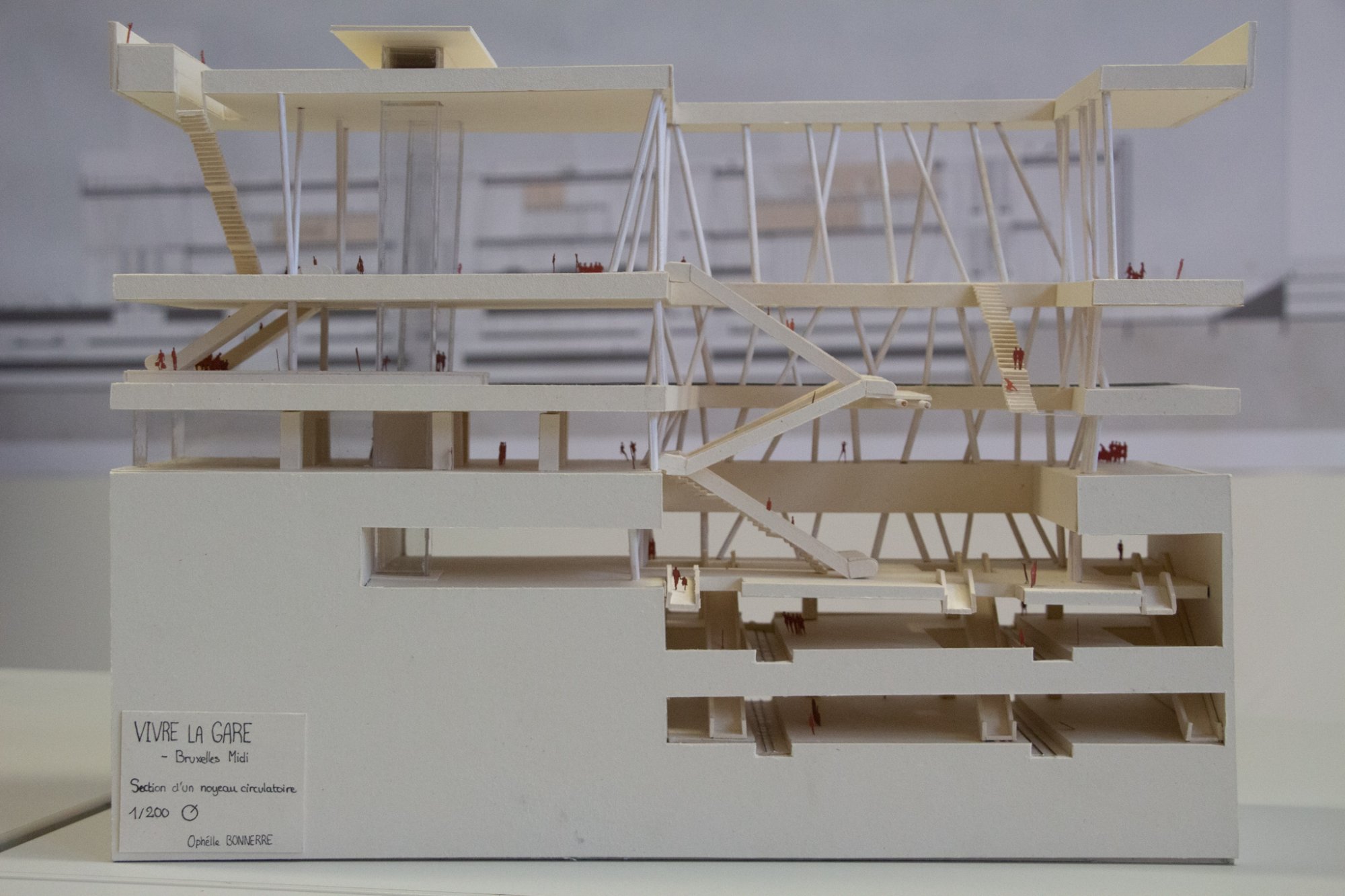Ophélie BONNERRE
Vivre la gare // Bruxelles-Midi
La région de Bruxelles-Capitale, qui compte aujourd’hui 1.2 millions d’habitants, est une place forte multiculturelle, au rayonnement international et européen. La gare de Bruxelles-Midi en est la porte d’entrée ferroviaire internationale, située au croisement de trois communes, la Ville de Bruxelles, Anderlecht et Saint-Gilles.
Construite en 1952 à l’issue de la finalisation de la jonction Nord-Midi reliant les gares Bruxelloises en un chapelet, la gare de Bruxelles-Midi devient alors une gare fonctionnaliste dissimulée sous le faisceau ferré six mètres au-dessus du sol. Elle connaitra une extension le long du viaduc ferroviaire à l’arrivée du TGV et de l’Eurostar dans les années 2000.
La gare de Bruxelles-Midi s’inscrit dans le quartier du même nom. Comptant principalement des bâtiments propriétés de la Société Nationale des Chemins de Fer Belges, le quartier accueille une dominante d’activités tertiaires, à laquelle s’ajoutent des logements, en grande majorité vétustes, et des bâtiments désaffectés.
A l’instar du quartier, cette gare au pôle multimodal noueux et saturé, pourtant point stratégique pour la ville, souffre d’une image négative et d’un manque de visibilité et de lisibilité certain. Mal vécu par ses 150 000 voyageurs quotidiens, cette gare de près de 25 000 m² plongée dans l’obscurité est également un des principaux passages pour les 15 000 habitants qui franchissent chaque jour la jonction ferroviaire.
Consciente des difficultés urbaines rencontrées, la Région de Bruxelles est à l’origine d’un projet visant à repenser le quartier de Bruxelles-Midi, y apportant une proportion égale de bureaux et de logements, ainsi que des services et des équipements au rayonnement divers. La gare occupant une position géographique centrale et offrant un rayonnement international au quartier, ce projet urbain proposé par l’AUC a pris pour nom « la gare habitante ». Cependant, la question financière étant prépondérante, la gare ne fait finalement l’objet que d’interventions minimes au regard des dysfonctionnements identifiés, au profit de la restructuration plus générale du quartier.
Dès lors, renforcer la position centrale de la gare au sein du quartier, en lui offrant une dimension urbaine complémentaire à celle de lieu de voyage et de transit m’a semblé essentiel.
L’objectif est donc de conférer une véritable dimension habitante à la gare, en proposant une restructuration de la partie existante et des espaces désaffectés attenants, ainsi qu’une extension franchissant les voies permettant l’accueil, outre les espaces nécessaires à la gare, de programmes associés à destination des habitants du quartier, des travailleurs et des voyageurs.
Une attention particulière est portée à l’intégration du projet au sein de la proposition urbaine formulée par Bruxelles, veillant à respecter les prescriptions du Plan d’Aménagement Directeur en cours d’élaboration, à requestionner certains points en vue d’une intégration optimale, et à répondre aux besoins du quartier identifiés en termes de programmes sportifs, culturels, extérieurs et de loisirs.
La gare tend ainsi à devenir un lieu du quotidien, adapté aux différentes temporalités de ses usagers ainsi qu’aux enjeux et besoins du quartier, sans oublier la valorisation de son rayonnement international.




